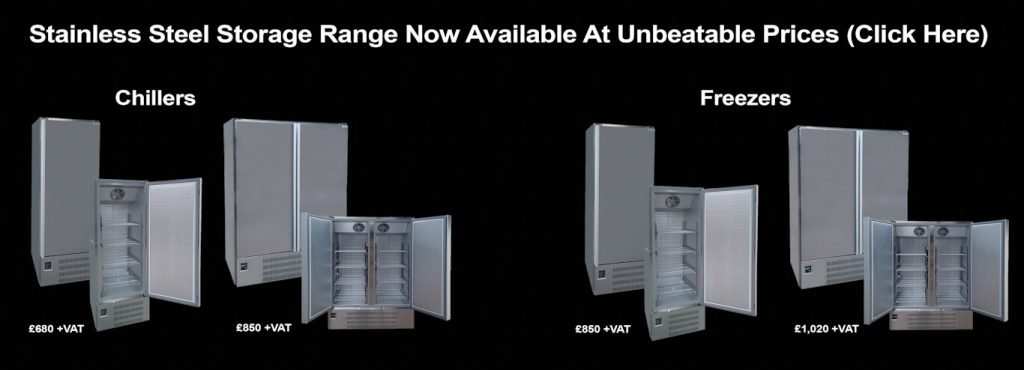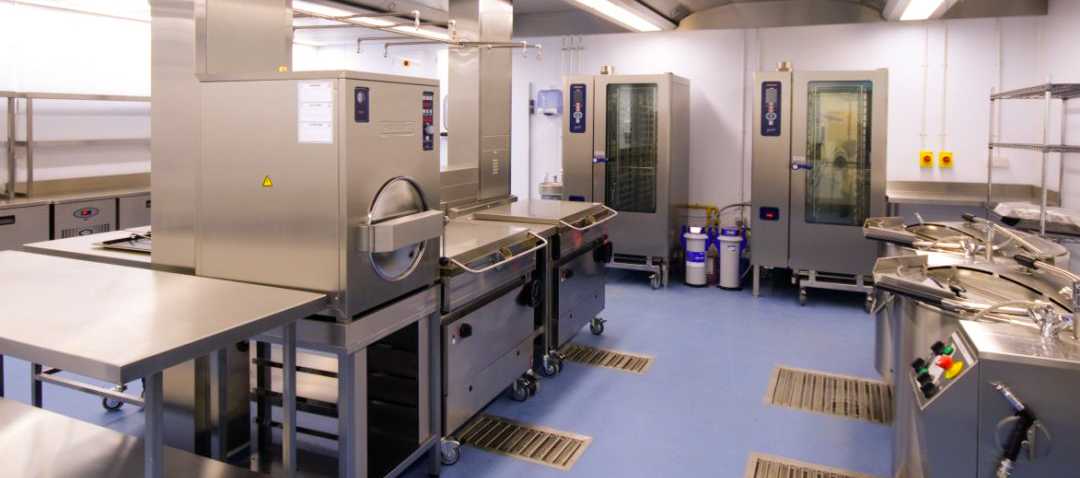The commercial refrigeration maintenance must be a no.1 priority for any business. A commercial refrigerator improves your catering kitchen, cooling all your beverages and ingredients to perfection. That’s why you need to perform routine verification, cleaning, and other maintenance activities. So, what you must know about it? Here some helpful commercial refrigeration maintenance tips to keep your display fridge clean and running smoothly.
When my commercial fridge needs maintenance or repairing?
How to verify my commercial fridge?
Can I repair the commercial fridge compressor?
Commercial Fridge Maintenance Procedure.
How to Clean the Refrigerator?
Clean the Condenser and Coils.
How to Clean the Fan Blades and Motors?
Check and clean the door Gaskets.

When my commercial fridge needs maintenance or repairing?
There are some signals when it comes to a faulty fridge. And if you check it regularly, you can see the signs of problem before they escalate. Some of them you can easily recognise and you’ll know what to do next.
Signs of broken refrigerator or freezer:
- You cannot hear the fan running – usually this makes an audible sound
- Adjusting the thermostat makes no difference to the temperature
- Food is warm, or frozen food is defrosting
- Unpleasant smell when you open the fridge or freezer doors
- Excess condensation
- The frost grows inside the refrigerator

What can stop the commercial refrigeration equipment from cooling?
A catering refrigerator not cool enough can put a fast-paced business in problem. Particularly if the chilling needs are at the highest standards. So, a few checks you can perform yourself could save your cabinet before things get out of hand.
Checking you catering fridge or freezer for issues:
- Air circulation: if the back of your commercial refrigerator presents flushes, or clutters of dirty, then it may mean there isn’t enough air getting through the system. So, ensure you place your fridge a little far away from the wall to avoid overheating.
- Door seal: commercial fridge has the feature to withstand daily use and constant opening the doors. However, the gasket may become worn down through many utilisations. And this can mean the inside becomes less cool. The gasket means the part of the refrigerator that induce an air tight seal whenever the door is closed.
- Temperature gauge: maybe your temperature gauge has a faulty reading, or it has stopped working. And this could signal a refrigeration issue.

Can I repair the commercial fridge compressor?
Your refrigerator depends very much on its internal compressor to keep the interior cold at all times. Working like a motor, fridge compressors circle the refrigerant on its system to ensure the required temperature. So, a faulty or broken refrigerator will begin to lose its cool, which can let the food inside warm.
In conclusion, you must follow the user guidelines and verify how often your compressor needs to be cleaned. When you don’t assure regular maintenance, the compressor can attract dirt, grease and grime. And this may lead to have it faulty. When compressor is faulty, in most cases, you will need to replace it.
How much the commercial refrigeration repair cost?
When your business count on it, you must repair the catering fridge, no matter how much it costs. So, you’ll need to call a fridge repairing specialist.

Commercial Fridge Maintenance Procedure
EU and UK regulators require retailers and caterers to keep perishable food in safe conditions. In addition, they demand to stock goods at correct temperatures during preparation, processing, transport, storage or display. Consequently, harmful bacteria can easily multiply at temperatures above 7°C. So, storing in colder temperatures will keep away most of these pathogens from growing and multiplying.
Food Standards Agency (FSA) describes Food Safety Regulations more specifically to concerns of food poisoning illnesses. And this, because of primarily bacterial contaminants, and other chemicals or physical hazards. So, we can define food hygiene as the insurance that food won’t harm us with any allergies and bacteria.

So, here some steps to ensure the catering fridge maintenance:
Organize your agenda and schedule a cleaning maintenance of your entire fridge unit on a time basis. The ideal period of time may be once a week. As I already specified in a past article about the commercial refrigeration cleaning, there are a few steps to follow:
– Unplug the refrigeration unit.
First thing you must do is to unplug the fridge or freezer. It can save your life. On any maintenance activity, we strongly recommend to unplug the refrigerator. So, don’t forget.
– Empty all the shelves.
Make sure you totally remove the containers. If you have remaining food and you want to save it, move it to another refrigerator. Consequently, you can use, small coolers like the bar fridge for temporary storage. Also, you need to clean the shelves as well. Wash and brush them to be clear like brand new.
– Junk all expired and musty food.
Perishable food can get lost in the goods mix in time in your chiller. Moreover, if you have a large refrigerator. Don’t let there anything that seems to be spoiled. The risk of food poisoning becomes a certitude and it’s not worth it. Also, you need to throw away all the opened cans and jars. And any other goods you haven’t used for months and you don’t plan to use them in the future.
– Clean the interior of the Refrigerator or Freezer.
Most important, never use caustic cleaning chemicals. Neither bleach or wire wool to clean the interior of your fridge. Consequently, they can damage the finish and can also provide chemical odours that can affect food. We recommend to use mild soap and warm water dilution.
Use a combination of warm water and a vinegar. Or you can use detergent-based solution for a best routine maintenance. If you want to remove grease or baked food, consider using an applicable stainless steel degreaser or a baking soda paste.
– Disinfect with a disinfectant.
Germs and mould can accumulate in time and this can get the customers sick. So, we must disinfect surfaces with a sanitizer. Assure that you are using a food-safe disinfectant, so be able to put items back into the fridge.

The commercial refrigeration condenser and coils drag in the remaining dust from the floor and clog the air intake. As a result, your fridge will use more energy to take in air and maintain the ideal temperature. So, you need to clean them weekly. So, start by removing the protective grill from the bottom or the top of the chiller. Brush the coils and the fan unit if it’s needed. And then vacuum them.
– Reinstall the clean grill.
-
Clean the exterior of refrigerator or freezer.
The exterior of the fridge cabinet needs to be cleaned regularly. You must use adequate cleaning solutions and materials for stainless steel exterior. Moreover, avoid using abrasive scrubbers and chlorine cleaners. Instead, use a wash cloth or soft brush to clean the exterior.
-
Clean surroundings, underneath and on the top of the refrigerator or freezer.
For the first, clean the top of the unit. Then, clean the surroundings area of your fridge. In addition, clean the floor under, and around the chiller or freezer. When commercial fridge has castors, ensure to pull cabinet away from the wall to reach everywhere around them.
– Restock shelves and food.
At the end, mount back the shelves, the food and then plug it in. Respect a proper food placement procedure. This means that any produce, butter, and condiments need to stay on the top shelf. On the next shelves, seafood, followed by whole cuts of raw meat. Below you must have the ground meat in separated containers. Raw poultry must be housed on the bottom shelf. This food placement procedure prevents any leaks from mixing and contaminating the other food.
The Fan blades and motors should be cleaned once a month. Use a soft cloth running over these elements. Verify the blades if they need to be washed. Always cover the motor with a dry cloth to protect it from moisture.

The door gaskets have a vital importance to any commercial refrigeration unit. Any type of split or crack can create problems to the door from sealing shut. You need to do this maintenance part more often when the unit sits in a commercial kitchen where grease is regularly used.
Consequently, this may cause cool air to exit the fridge’s interior. If a gasket has issues, assure to replace it with the adequate manufacturer recommendation. For instance, when replacing a gasket, try to associate it with your chiller’s serial and model number.
We recommend to remove the door gaskets and allow them to soak in a mild soap and water mixture for around 30 minutes. Repeat the procedure every week. Always completely dry gaskets before replacing. Then, check them for any damage, wear or rift that could affect the efficiency of your commercial fridge.
Reattach the door gaskets and ensure that a tight seal is achieved. Consequently, verify if the doors are closed, signalling that they have a correct fitting.
Grease and dust accumulated from the catering kitchen may put problems on your commercial fridge’s air filters. A large build-up can prevent air from properly ventilating. In conclusion, you need to make routine cleanings. So, remove any dust or loose debris with a professional vacuum. Then, use degreasing solution to clean the dense grease. Read the service or maintenance guide for tips on how to properly degrease the filter. Moreover, if you notice splits from the debris, replace the filter as soon as possible.

A large commercial fridge or freezer can attract mud, and may cause your unit to freeze up. So, ensure to check your drain pan and any tubing for unwanted build-ups. If your drain pain excess with moisture, it can release an unpleasant smell throughout your cookery. So, clean the pan minimum once a month. Consequently, use a vinegar solution or soap and warm water to clean it.
In addition, dirty in excess can cause drain tubes clogging. Verify the tubing every month or maximum 2 months to prevent a significant obstruction. And if you notice calcium or water spots on the exterior of the tubes, clean them with soap and warm water to prevent any future rub.
-
Keep your Chiller Dry.
Wipe up any accumulated liquid on the shelves. Gathered moisture may freeze up your catering refrigerator or freezer. Moreover, you should check for humidity accruals preferably once a week.
10. Finally, once cleaning is completed, turn the appliance back on.
Visit our commercial display fridges range and storage chillers category.

Read more articles:


